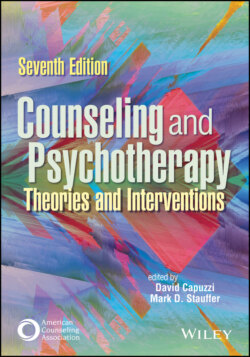Читать книгу Counseling and Psychotherapy - Группа авторов - Страница 30
HELPING RELATIONSHIPS: CORE CONDITIONS
ОглавлениеThe concept of basic or core conditions related to the helping relationship has its basis in the early work of Rogers (1957) and the continued works of authors such as Carkhuff and Barenson (1967), Combs (1986), Egan (2013), Hill et al. (2014, 2020), and Truax and Carkhuff (1967). Their works pursued a question, “What are the core conditions and basic skills that exist in the best of therapeutic relationships?” From a biological perspective, what has been discovered in the last few decades is that the identified core conditions, such as empathy, have neurobiological correlates (Coutinho et al., 2014). For example, “mirror” neuron mechanisms, or neurobiological social learning “copy processes,” help individuals produce and perceive facial emotional expressions vital to empathy (Krautheim et al., 2019). Basically, humans are prosocially gifted, and counselors are taking advantage of and enhancing, if not mastering, this. Core conditions are the result of more than neurobiology as they are mediated by lived experiences, personality traits, culture, or some combination of these. It should be obvious that the concept of core or basic conditions relates directly to various personal characteristics, capacities, or behaviors that the counselor or therapist brings to and incorporates into the helping relationship (see Sidebar 1.3).
